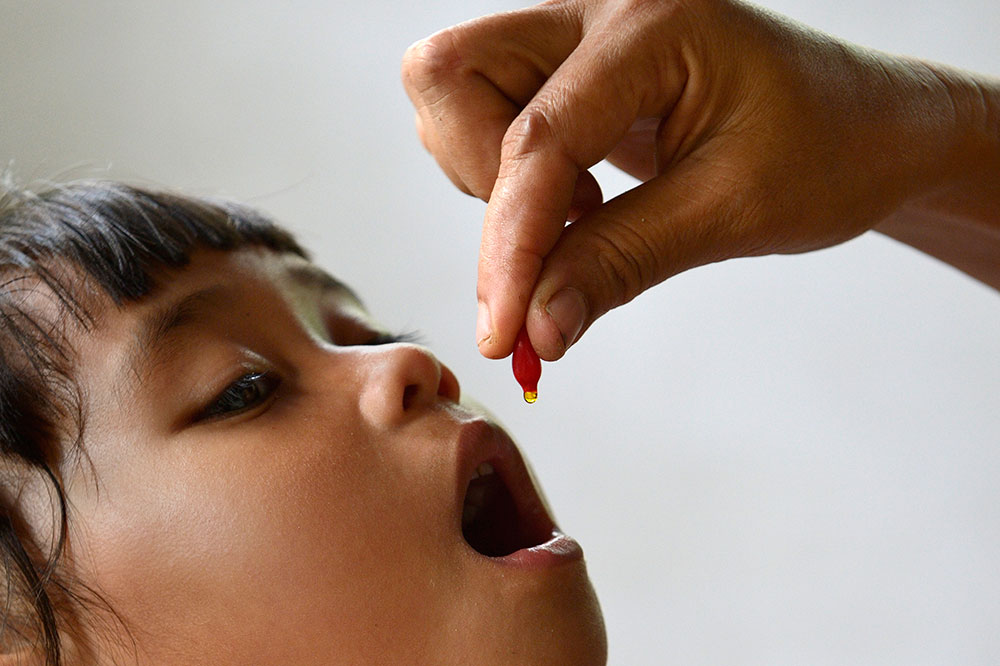Vitamin A is a crucial nutrient for children’s growth, vision, and immune function. It plays a key role in preventing infections and supporting overall health. Including Vitamin A-rich foods in your child’s breakfast can help provide essential nutrients to start the day. Foods like eggs, dairy products, and orange-colored fruits and vegetables (such as carrots and mangoes) are great Vitamin A. Understanding the right Vitamin A dose for a child ensures that your child receives adequate nutrition without the risk of deficiency or overdose.
1. Vitamin A Drops for Child: When and How to Use?
For younger children, Vitamin A drops for children are a preferred method of supplementation. These liquid drops ensure easy absorption and accurate dosing. They are commonly recommended for infants who may have difficulty swallowing pills.
- Infants aged 6–11 months should receive 100,000 IU of Vitamin A drops.
- Children aged 12–59 months should receive 200,000 IU every 4–6 months.

2. Vitamin A Dose Schedule: How Often Should a Child Get It?
The Vitamin A dose schedule is designed to prevent deficiencies and promote long-term health. The World Health Organization (WHO) recommends:
- First dose is given at the age of 6 months.
- After the first dose, the child should continue receiving Vitamin A supplementation every 4–6 months.
Regular supplementation helps maintain healthy vision, growth, and a strong immune system.
3. The first Dose of Vitamin A is Given at the Age of 6 Months:
The first dose of Vitamin A is crucial and should be given at 6 months of age. This is the stage when breast milk alone may not be enough to meet the growing baby’s nutritional needs. Providing Vitamin A at this stage strengthens the immune system and reduces the risk of infections.
4. Vitamin A for Baby 6 Months: Importance of Early Supplementation
For a baby at 6 months, Vitamin A plays an essential role in development. At this age, babies begin eating solid foods, but their Vitamin A intake may still be insufficient. Ensuring they receive Vitamin A supplementation helps prevent blindness, infections, and growth delays.

5. Vitamin A 200,000 IU Dosage for Child: Is It Safe?
The Vitamin A 200,000 IU dosage for child is safe when administered at appropriate intervals. WHO and UNICEF recommend this dose for children aged 12–59 months, usually given every 4–6 months.
It is important to follow this schedule because an excess dose within a short period may lead to toxicity, causing nausea, vomiting, and dizziness.
6. Vitamin A Syrup for Child: Benefits and Usage
Apart from drops and capsules, Vitamin A syrup for children is another way to ensure adequate intake.
- Easier for younger children to consume.
- Ensures proper absorption and digestion.
- Available in different flavors to make it palatable for kids.
Parents should consult a doctor before giving Vitamin A syrup to their child to ensure the correct dosage.
7. Vitamin A Dose for Children with Measles: Why It’s Crucial?
Children suffering from measles have a higher risk of complications, including blindness and pneumonia. Vitamin A dose for child with measles is essential to prevent severe effects of the disease.
- WHO recommends 200,000 IU of Vitamin A for children over 12 months with measles.
- Infants under 6 months should receive 50,000 IU, and those aged 6–11 months should receive 100,000 IU.
This supplementation helps reduce measles-related deaths and speeds up recovery.
8. Vitamin A Food for Children: Natural Sources
In addition to supplementation, including Vitamin A-rich foods for children in their diet is essential. Foods high in Vitamin A include:
Animal-Based Sources (Rich in Retinol)
- Liver (Beef, Chicken, Fish)
- Egg Yolks
- Milk and Dairy Products (Cheese, Butter)
Plant-Based Sources (Rich in Beta-Carotene)
- Carrots
- Sweet Potatoes
- Pumpkin
- Spinach and Kale
- Mangoes and Papaya
A balanced diet with these foods helps maintain steady Vitamin A levels and supports healthy growth.

9. Vitamin A Capsules for Children: When to Use?
For older children, Vitamin A capsules for children are a convenient and effective option. These capsules are available in dosages of 100,000 IU and 200,000 IU, making them suitable for periodic supplementation.
Advantages of Vitamin A Capsules:
✔ Long shelf life
✔ Easy to store and carry
✔ Ensures precise dosage
Children who do not get enough Vitamin_A from their diet or have medical conditions requiring supplementation may benefit from Vitamin_A capsules.
Precautions and Safety Considerations:
While Vitamin A supplementation is beneficial, excessive intake can cause Vitamin_A toxicity. Symptoms include:
- Headaches
- Dizziness
- Nausea
- Dry Skin
- Liver Damage (in extreme cases)
It’s crucial to follow the recommended dosage and consult a healthcare provider before giving Vitamin A supplements to your child.
Final Thoughts:
Ensuring that children receive the right Vitamin A dosage is essential for their growth, vision, and immune health. Whether through Vitamin A drops, syrups, or capsules, parents should follow the recommended Vitamin A dose schedule to prevent deficiency-related health problems.
By combining supplementation with Vitamin A-rich foods, you can help your child grow healthy and strong!
FAQS:
Can I Give Vitamin A to My Child?
Yes, you can give vitamin A to your child, but it should be in the appropriate dosage. Vitamin A is crucial for vision, immune health, and overall growth. However, excessive intake, especially from supplements, can lead to toxicity. It’s best to get vitamin A from food sources, but if supplements are needed, consult a doctor before giving them to your child.
What Does Vitamin A Do for Kids?
Vitamin A plays a vital role in a child’s development. It helps maintain good eyesight, especially in low-light conditions, and strengthens the immune system to fight infections. Additionally, it supports the development of healthy skin, bones, and organ function, including the heart and lungs. Vitamin A is also important for cell growth and repair.
How Much Vitamin A Should a Child Have?
The recommended daily intake of vitamin A for children depends on their age:
- 1-3 years: 300 mcg (micrograms)
- 4-8 years: 400 mcg
- 9-13 years: 600 mcg
It’s essential to ensure your child gets the right amount from natural food sources. Too much vitamin A, especially from supplements, can be harmful and cause symptoms like nausea, dizziness, and liver issues.
What is the Best Vitamin A for Kids?
Natural foods such as carrots, sweet potatoes, spinach, eggs, and dairy products are the best sources of vitamin A for kids. These provide a safe and balanced amount of vitamin A without the risk of overdose. If supplements are needed, choose a pediatric-specific vitamin A supplement and consult a healthcare provider to ensure the correct dosage.
External Resources:
World Health Organization (WHO): The WHO offers detailed guidelines on vitamin A supplementation for infants and children aged 6–59 months, emphasizing its importance in supporting rapid growth and combating infections.

Empowering parents to raise happy, confident kids. Get practical parenting tips and advice on our blog, Smart Parent Guides.
